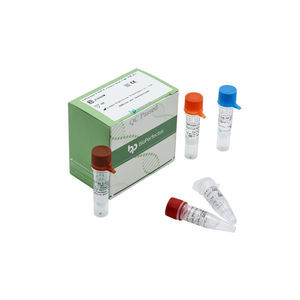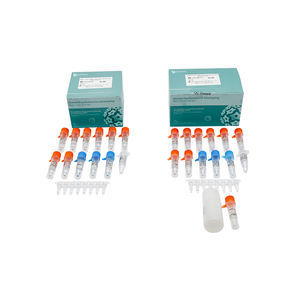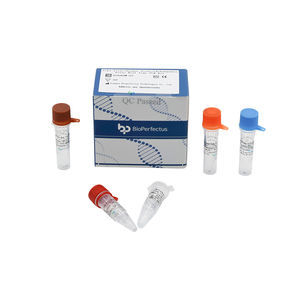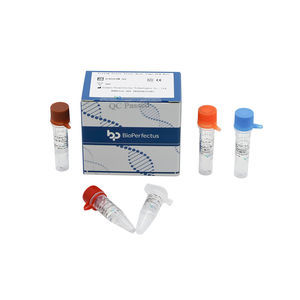
- Laboratory
- Laboratory medicine
- Research test kit
- Jiangsu Bioperfectus Technologies Co., Ltd.

- Products
- Catalogs
- News & Trends
- Exhibitions
Research test kit RUOSARS-COV-2nasopharyngealsputum
Add to favorites
Compare this product
Characteristics
- Applications
- for research
- Micro-organism
- SARS-COV-2
- Sample type
- nasopharyngeal, sputum, throat
- Analysis mode
- for real-time PCR
Description
On Nov. 24, 2021, the variant B.1.1.529 was first identified in South Africa, and only two days later, WHO announced that B.1.1.529 constitutes a variant of concern, named “Omicron”. There are more than 30 mutation sites on the S gene of variant B.1.1.529. Omicron has a greater binding affinity than the original SARS-CoV-2 virus, with levels more comparable to what we see with the Delta variant. Some of the mutations have been detected in previous variants, such as Alpha and Delta, and have been associated with increased transmissibility and immune evasion. Many of the other identified mutations are not yet well characterized and have not been identified in other currently circulating variants. More investigations are underway to determine the possible impact of these mutations. Omicron includes Pango lineage B.1.1.529 and descendent Pango lineages BA.1, BA.1.1, BA.2 and BA.3
Features
Identify Omicron variant by simultaneous detection of ORF1ab, and four specific mutation sites of S gene
Automated result interpretation add-in for STC-96A & 96A Plus*
Semi-automated interpretation tool available for other real-time PCR instruments
Endogenous internal control (IC) ensures the whole process is reliable
Parameters
Target - ORF1ab, mutations E484A, N679K, L981F, and H655Y of S gene
Coincidence with an internal positive reference - 100%
Coincidence with an internal negative reference - 100%
Limit of detection - 500 copies/mL
Sample type - Nasopharyngeal swabs, throat swabs, sputum specim
Certificate
For Research Use Only. Waiting for the clearance of regulatory.
Other Jiangsu Bioperfectus Technologies Co., Ltd. products
Assay
Related Searches
- Assay kit
- Solution reagent kit
- Blood assay kit
- Molecular biology reagent kit
- Serum assay kit
- Immunoassay assay kit
- Plasma assay kit
- Infectious disease detection kit
- Respiratory infection test kit
- Whole blood detection kit
- Clinical assay kit
- Cassette assay kit
- Lateral flow test kit
- COVID-19 detection kit
- Real-time PCR test kit
- Research assay kit
- IgG test kit
- Strip detection kit
- Laboratory detection kit
- Cell assay kit
*Prices are pre-tax. They exclude delivery charges and customs duties and do not include additional charges for installation or activation options. Prices are indicative only and may vary by country, with changes to the cost of raw materials and exchange rates.




























